Embryo is a project that began in 2020 with the goal of speeding up the process of creating digital sculptures of the human figure. It consists of an anatomical mannequin with adjustable proportions and pose.
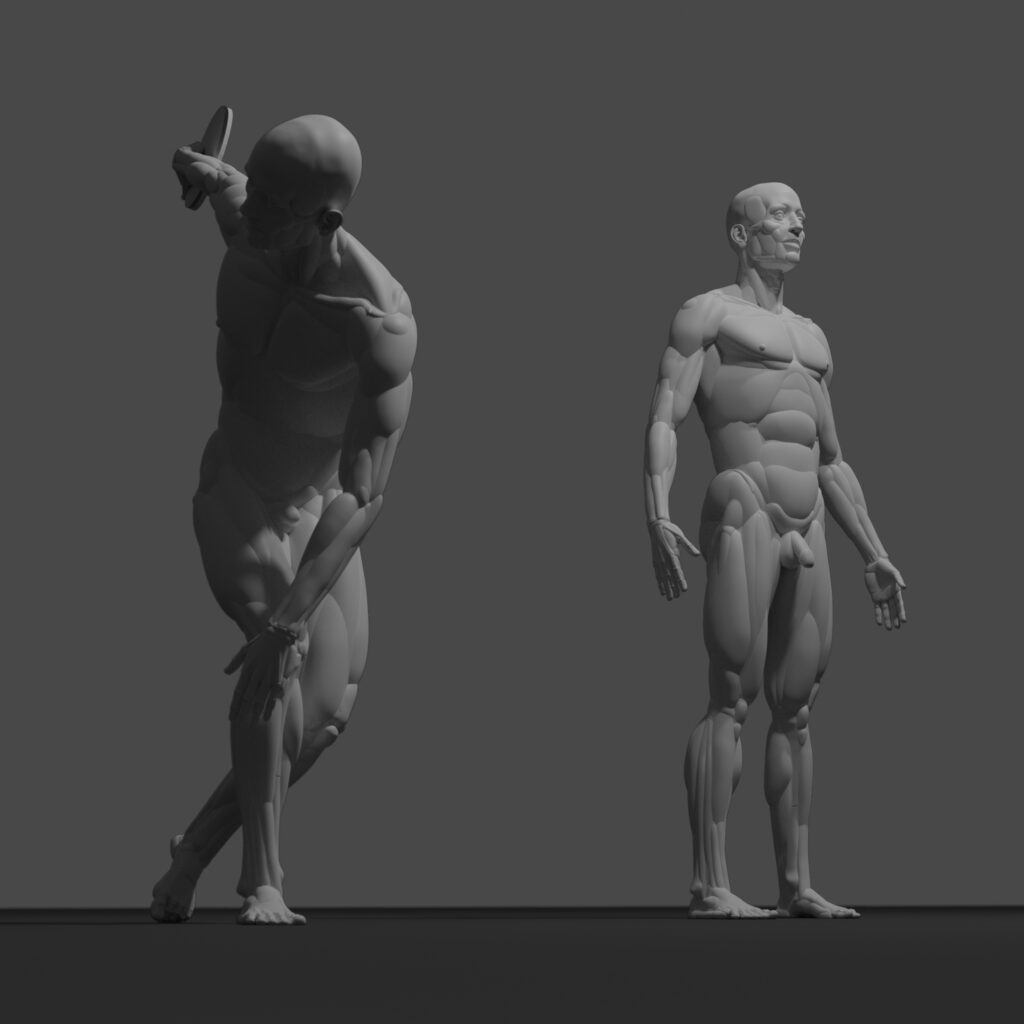
The Embryo mannequin is an assembled group of simplified anatomical elements, that are linked together. The simplified anatomical elements are objects composed of multiple meshes that roughly represent bones, muscles, and fat. The simplified anatomical elements are shown in the images below divided by colors.
The anatomical elements can be of 3 types: bone, muscles-fat, and mixed. Bone elements are similar to bones and consist in the key points that move the mannequin. Muscle-fat elements are shapes that imitate the shape of muscles, fat, or a mix of both, and move following the bone elements. Mixed elements are a mix of bone elements and muscle-fat elements.

The system works by moving, rotating, or scaling a portion of the body from key points, which are the bones that compose the articulations. In the image below the arm is moved by rotating the upper margin of the humerus bone element.
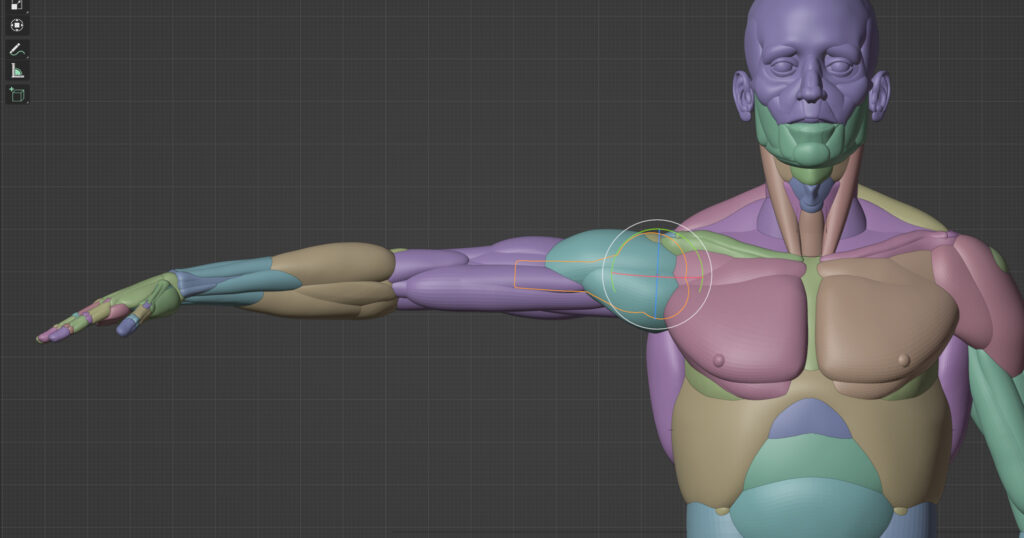
Arms and legs' length can be changed, thanks to a traversal cut in two parts of their bone elements: humerus, radius-ulna, femur, and tibia-fibula. If moved away longitudinally, the two components of the bone elements cause the length variation of the entire limb's portion. This trick allows, in the case of the forearm, other than variation in length, also the rotation of the wrist.
The next picture shows:
1. Arm and forearm's bone subdivision in two parts, marked with colors
2. Full arm
3. Forearm stretch
4. Wrist rotation
5. Forearm and linked objects (hand) enlarged
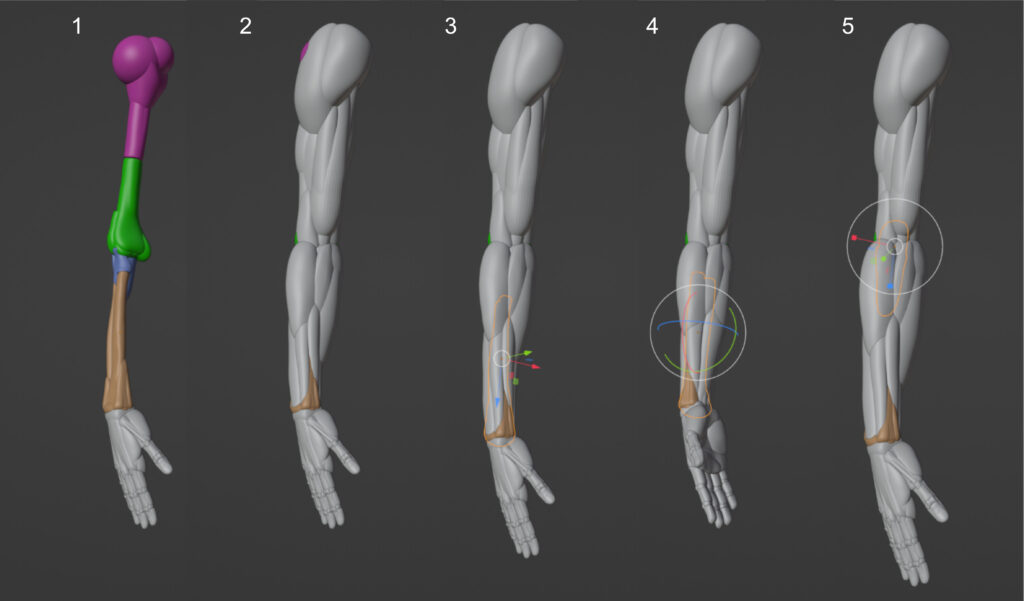
Bone objects and muscle-fat objects are tied to each other by simple parenting links, and not with rigging techniques. For this reason, the muscles-fat objects do not deform when the bone objects move, but just stiffly follow the movement of the ones, that they are related to. In fact, in order to achieve coherent muscle deformations, it is necessary to modify the muscle-fat volumes after the move in sculpting mode. The image sequence below shows the pectoral object not following the arm lift and being fixed.

Only in four cases the objects behave elastically:
1. Lumbar meshes
2. Abdominal oblique meshes
3. Sternocleidomastoid meshes
4. cervical meshes
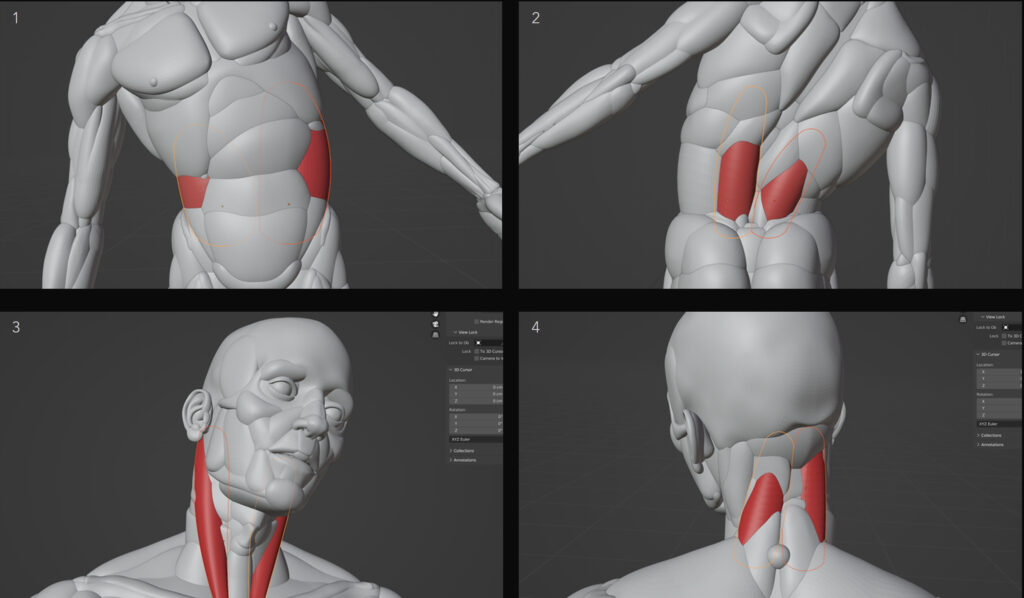
These deforming meshes are able to shrink, relax, scale, and rotate from their extremities, thanks to apposite controllers. Once they are linked to the proper bone objects, they behave like muscles.
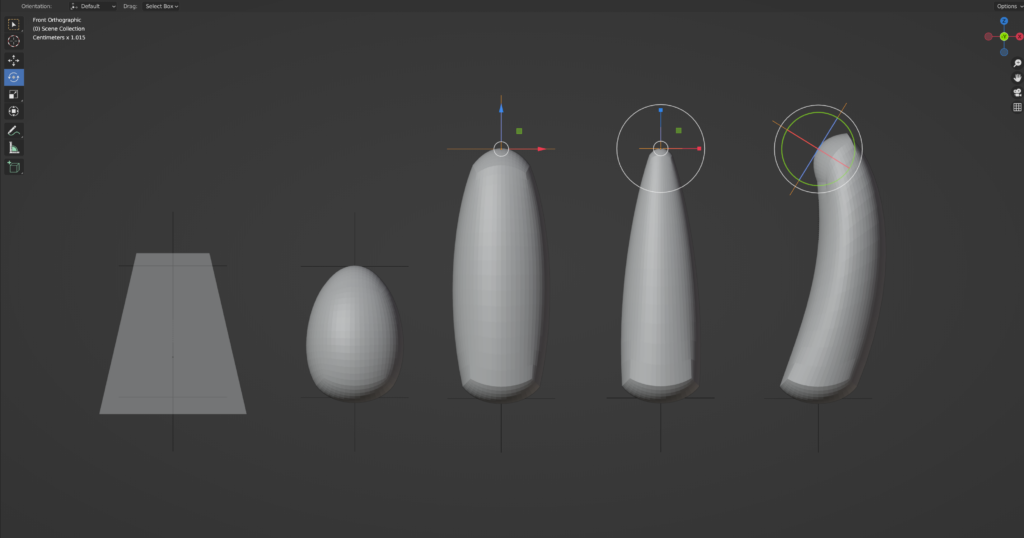
The dorsal spine of Embryo is composed of eight elements linked to each other, in this order: from the 1st to the 5th and from the 8th to the 6th, with the 5th and the 6th not reciprocally connected. the eight dorsal spine elements of the mannequin represent groups of vertebrae: 1st and 2nd for the cervicals, 3rd, 4th, and 5th for the dorsals, 6th, and 7th for the lumbars, and 8 for the sacrals.
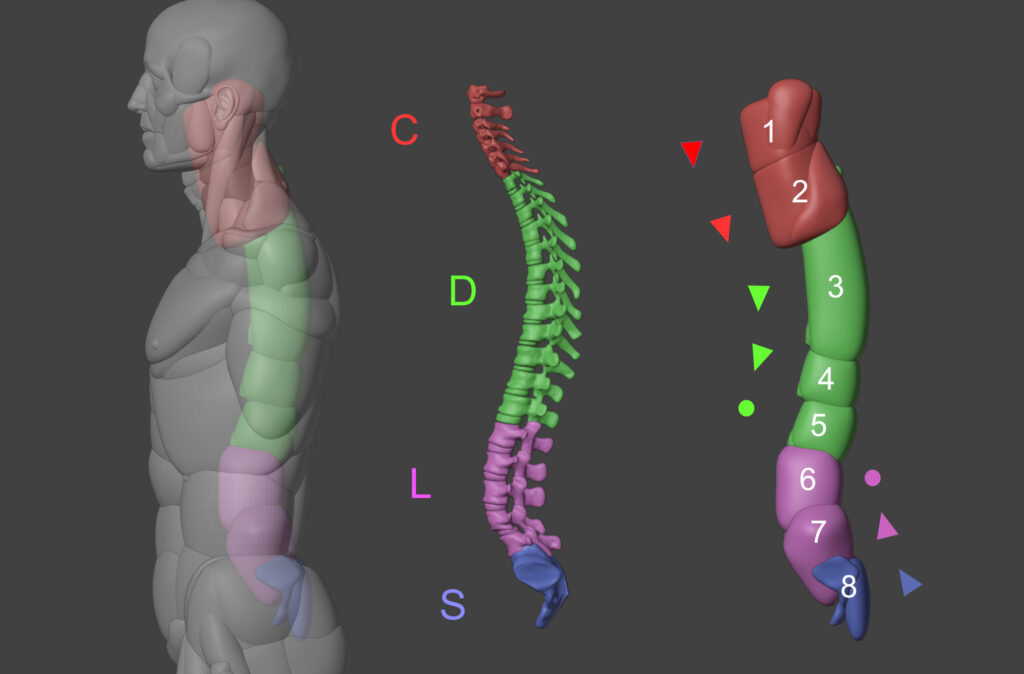
The workflow for creating a digital sculpt with Embryo, consists of these phases:
A) Proportions setting
B) Posing and deformation fixing
C) Further volumes refinements and material addition
D) Merging all the elements and refining in digital sculpting
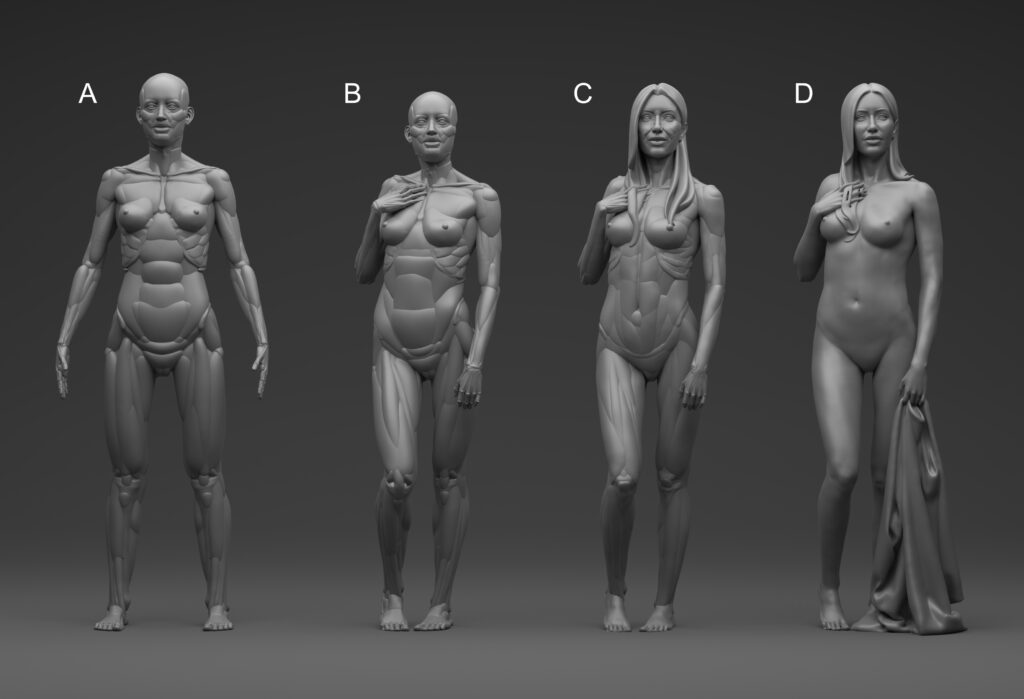
Phases A and B are also shown in this video.
ChatGPT ha detto: As of 2025, the Embryo project is still under development. The next version will feature a mannequin composed entirely of deformable muscle-fat elements that anatomically accurately follow the transformations and movements of the skeletal system.
